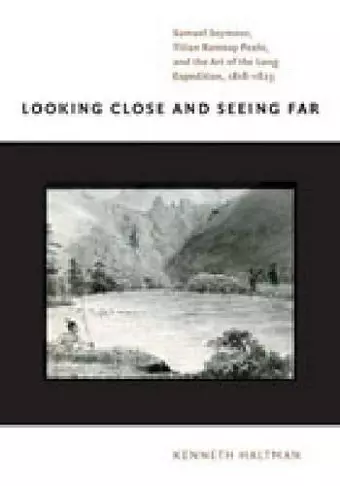Looking Close and Seeing Far
Samuel Seymour, Titian Ramsay Peale, and the Art of the Long Expedition, 1818–1823
Format:Hardback
Publisher:Pennsylvania State University Press
Published:31st Mar '08
Currently unavailable, and unfortunately no date known when it will be back

Picking up where Lewis and Clark had left off, the Long Expedition of 1819–20 was the first federally sponsored exploratory expedition that was accompanied by professional artists. Under the command of Major Stephen Harriman Long, artists Samuel Seymour, a Philadelphia landscape painter, and Titian Ramsay Peale, a natural historian and the son of artist-scientist and museum proprietor Charles Willson Peale, together produced more than four hundred drawings and paintings capturing the journey that extended up the Missouri River and through vast stretches of the Louisiana territory. Their work introduced American viewers to the landscapes, wildlife, and Native American inhabitants of the far West. Though widely publicized after the artists’ return to Philadelphia, the works were gradually dispersed.
This book unites the core body of extant paintings and drawings, providing a detailed account of the expedition through close visual readings that reveal Seymour’s and Peale’s complex and unique responses to the contradictory goals of their assignment. Such work is argued to have greatly influenced future artistic expression in the genres of landscape, ethnographic portraiture, and scientific illustration.
Though the subject matter is linked largely to the history of “the West,” both the art and the expedition itself were eastern in origin, influence, and institutional affiliation. As the leading cultural center of the time, Philadelphia gave focus to the American interest in understanding the world through both scientific and artistic forms of representation. Such a duality, Haltman argues, informed the work of Seymour and Peale, who struggled in their art to reconcile the conflict between their scientific obligations to the mission and their private imaginative and artistic ambitions.
“It is difficult to imagine a more learned account of this material. Looking Close and Seeing Far is a signal contribution to studies of American Romanticism—a lucid, exemplary account of the richness of an art of not-knowledge, of an art about failings and strivings to know a place (the American West) as much as that place itself.”
—Alexander Nemerov, Yale University
“University of Oklahoma art historian Kenneth Haltman has collected the surviving images and skillfully weaves a tale of science and art, of eastern sensibilities and western wonders, in this exhaustively researched volume.”
—Bloomsbury Review
“Looking Close and Seeing Far deepens and complicates our understanding of the art of the western surveys and the relationship between art and science in the early national period. My major concern about this eloquent and beautifully produced book is that because it addresses lesser-known artists, working in less-valued media, in a little-studied period, it will not be as widely read as it deserves to be.”
—Rebecca Bedell CAA Reviews
“Haltman (Univ. of Oklahoma) offers a meticulously researched, carefully written, handsomely illustrated, and perceptively argued study that examines in particular the unique contributions of Samuel Seymour and Titian Ramsay Peale in providing both a visual record and artistic impression of the topography, geology, flora, fauna, and Native peoples encountered.
Haltman carefully examines their paintings and drawings to understand the cultural, artistic, and intellectual context in which they were created and the artistic conventions and symbolism that they followed or abandoned. The detailed notes, comprehensive bibliography, and attractive, appropriate plates further add to the value of this work.”
—P. D. Thomas Choice
ISBN: 9780271029825
Dimensions: 254mm x 178mm x 23mm
Weight: 1220g
306 pages